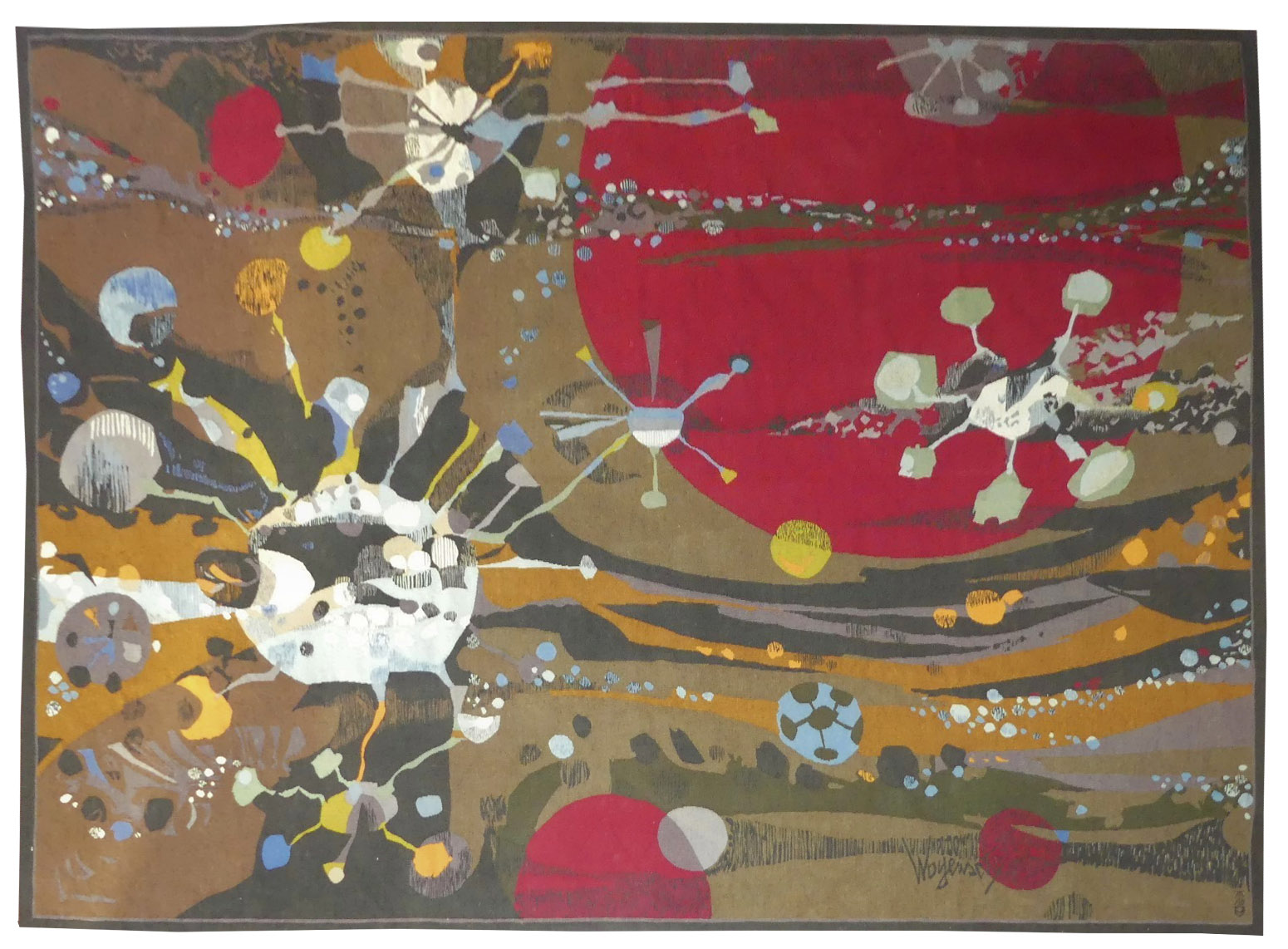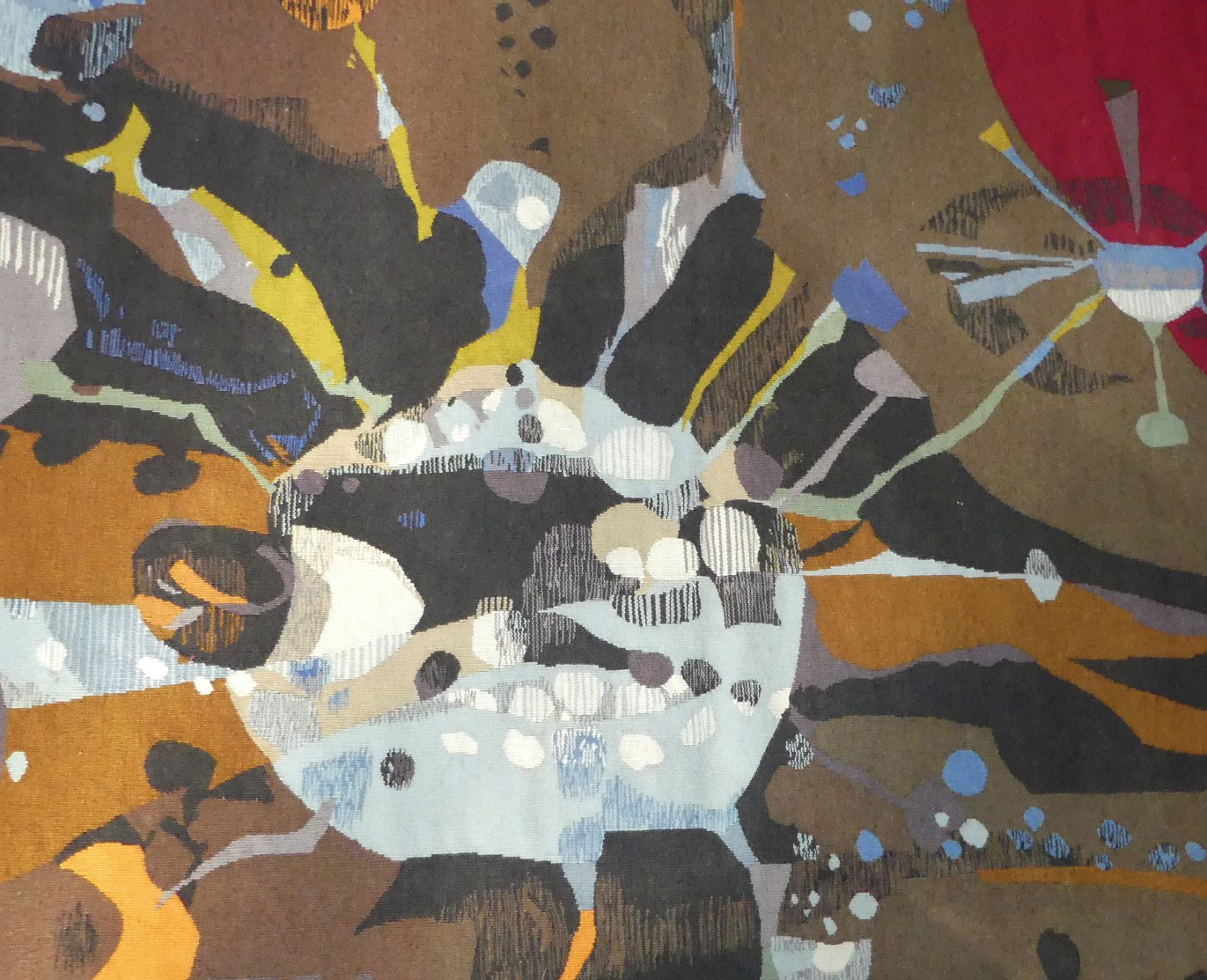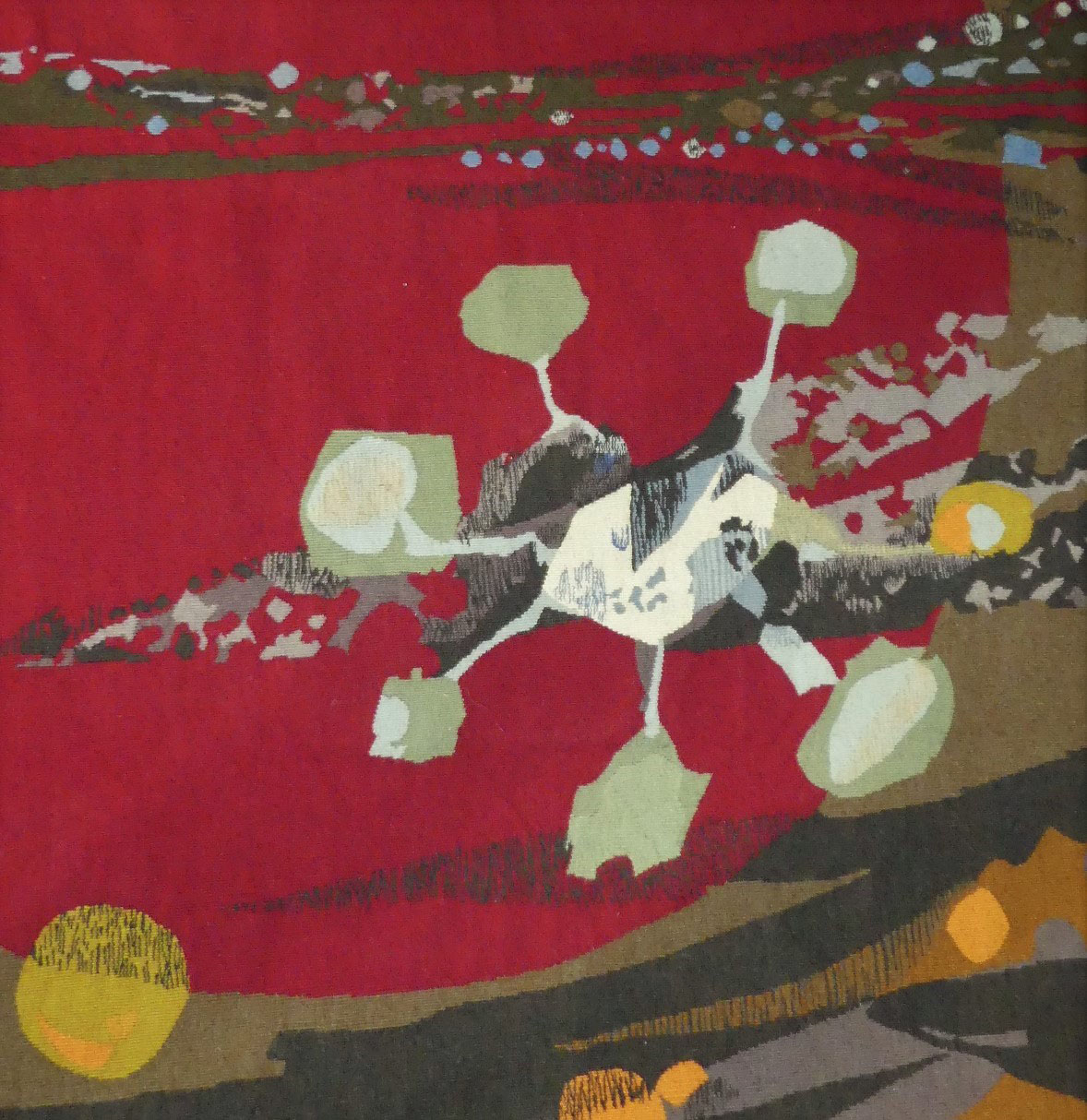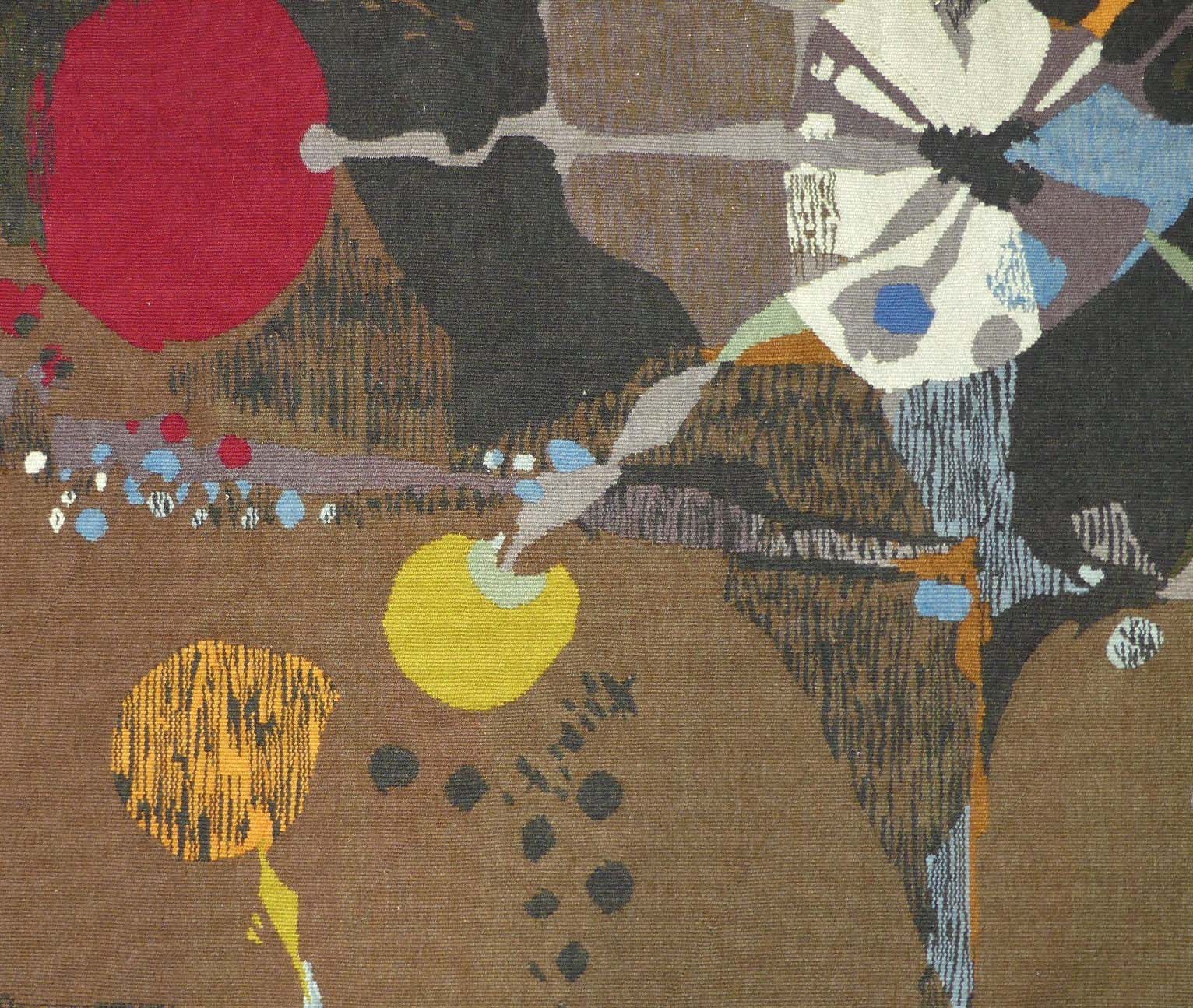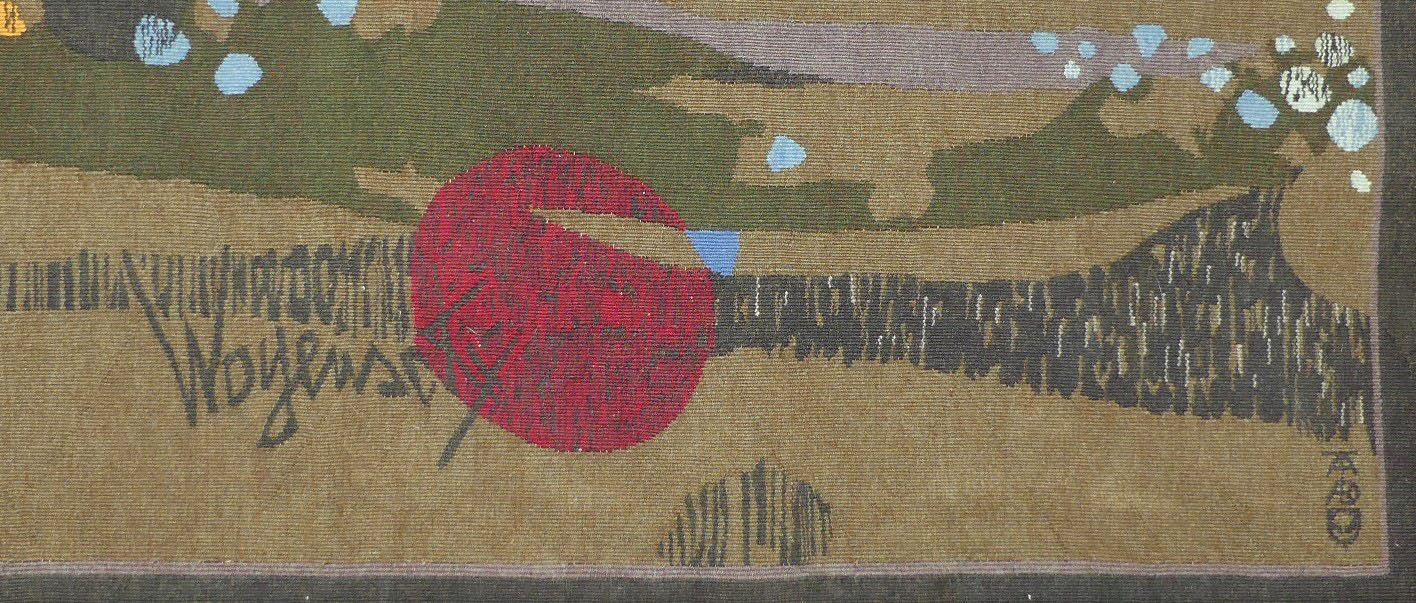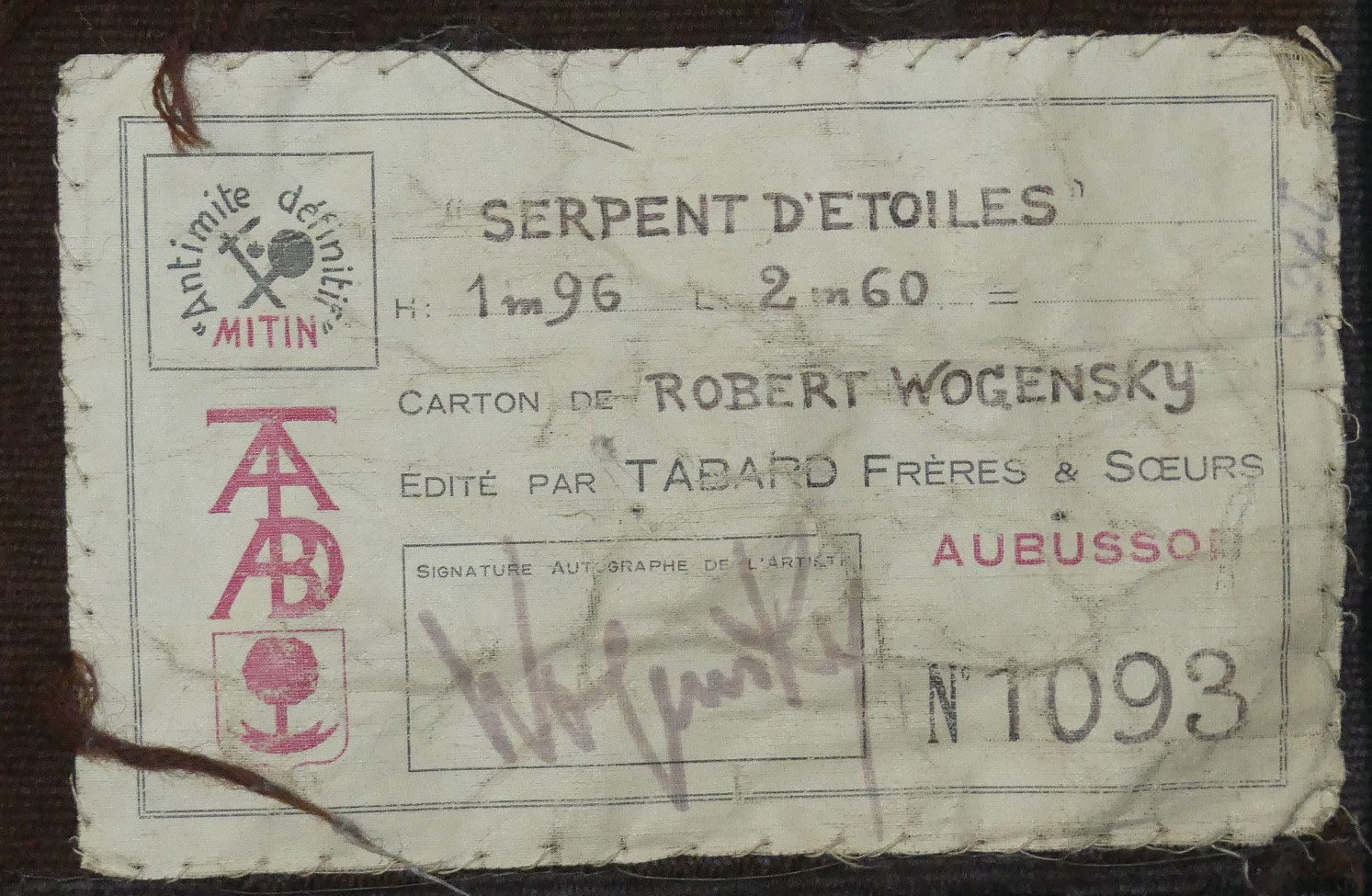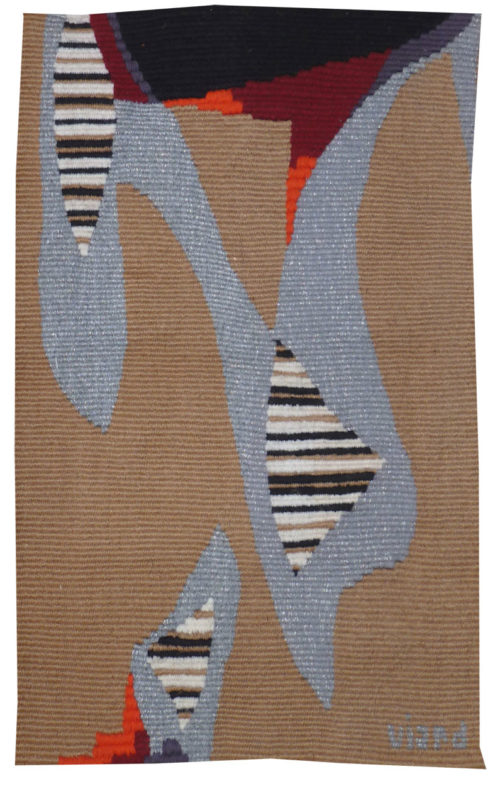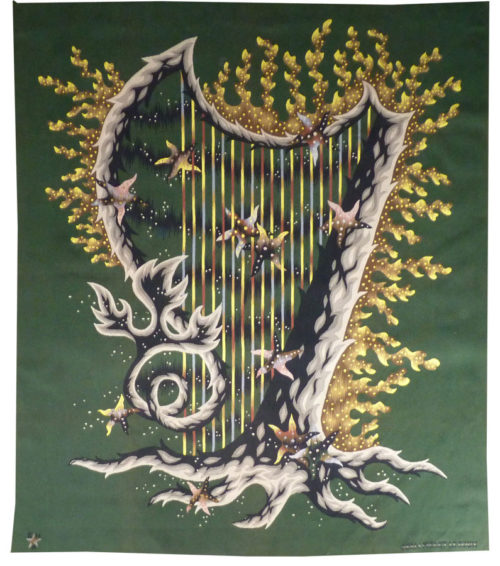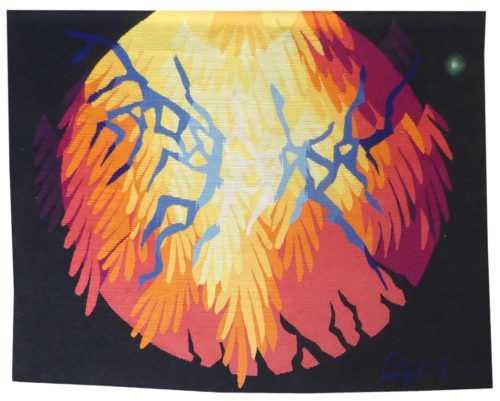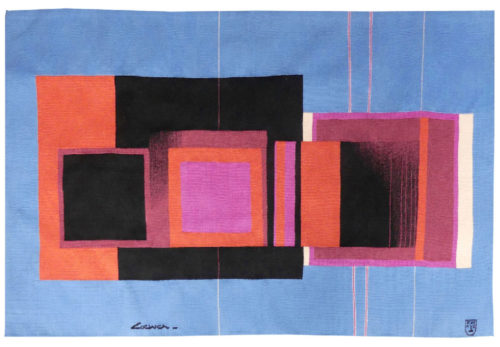Serpent d’étoiles (serpent of stars)
Aubusson tapestry woven by the Tabard workshop.
With signed label.
1961.
A member of the A.P.C.T. (Association des Peintres-Cartonniers de Tapisserie), Wogensky is one of the many artists who would follow in Lurçat’s footsteps immediately after the war. At first influenced by his predecessor, Wogensky’s subsequent work (159 cartoons according to the 1989 exhibition catalogue) would evolve during the 1960’s towards a, not completely self-avowed, lyrical abstraction, from cosmic-astronomical themes expressed in decomposed, moving, birdlike shapes to cartoons both more refined and less dense. Although always claiming to be a painter, the artist’s conception of tapestry is extremely well thought out : “the realisation of a mural cartoon…. requires the consideration of a space which is no longer ours alone, by the nature of its dimensions, its scale, it also imposes a grand gesture which transforms and accentuates our presence.”
« Serpent d’étoiles » (Serpent of stars) references the constellation Serpens (but also inevitably Giono’s novel of the same name), at a time (the 1960’s) when his out and out lyricism led him to the evocation of celestial bodies, space, the galaxies ; from “Cassiopée” in 1961, “Chant des étoiles” in 1962 (which figured at the Biennale de Lausanne), to “Galaxie” (1970) now in the collection of the French Senate.
A similar tapestry figures in the the collection of the Conseil Régional du Limousin.
Bibliography :
Exhibition Catalogue Robert Wogensky, tapisseries, Galerie la Demeure, 1962, ill.
Exhibition catalogue Robert Wogensky, Aubusson, Musée départemental de la tapisserie, 1989
Exhibition catalogue Robert Wogensky, Angers, Musée Jean Lurçat et de la Tapisserie Contemporaine, 1989-1990, ill. p.20
Exhibition Catalogue Dialogues avec Lurçat, Musées de Basse-Normandie, 1992, ill. p.73
Gérard Denizeau, Denise Majorel, une vie pour la tapisserie, Aubusson, Musée départemental de la tapisserie, ill. p.67


